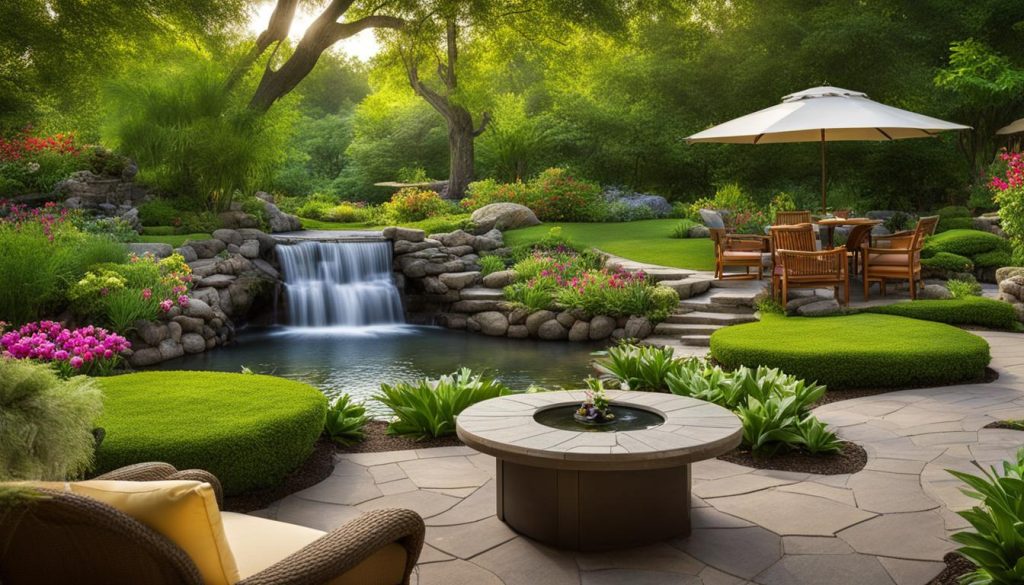Welcome to our guide on landscaping tips to transform your outdoor space into a stunning oasis, your dream backyard right here in Canada. With our expert advice, you can enhance the beauty and functionality of your outdoor space and make it a place where you and your loved ones can spend quality time. Whether you’re a seasoned gardener or just starting, our tips are designed to help you achieve your landscaping goals successfully.
The key to creating a beautiful and functional outdoor space is to strike a balance between aesthetics and practicality. With the right techniques and tools, you can create an outdoor space that reflects your style and personality while providing a serene environment. We’ll guide you through assessing your outdoor space, designing your landscape, choosing the right plants, incorporating hardscaping elements, proper maintenance, and care to ensure your landscaping project is a success.
Whether you’re looking to add new plants or revamp your entire outdoor space, our landscaping tips will provide valuable insights to achieve your desired results. Read on to explore our expert advice.
Assessing Your Outdoor Space
Welcome to the second section of our article on landscaping essentials. Before we begin the designing phase, it’s important to assess your outdoor space. In this section, we’ll guide you through the process of evaluating your landscape and defining your goals and vision for the project.
Assessing your outdoor space allows you to understand its current state and identify potential areas for improvement. You can start by walking around your property and taking note of the following:
- The condition of your lawn and plants: Are they healthy or in need of care?
- The availability of natural resources: What is the amount of sunlight, water, and shade?
- The topography of your property: Are there any slopes, rocks, or other natural features?
- The existing hardscaping elements: Do you have any patios, pathways, or structures?
An accurate evaluation of your landscape will help you set realistic goals for your project. Consider your vision for the outdoor space. What are your priorities? Do you want to create a relaxing retreat, an entertainment area, or a functional garden? By defining your goals, you can ensure that your landscape design will meet your needs and expectations.
To summarize, assessing your outdoor space is the first step in creating a stunning oasis. By evaluating your landscape, defining your goals, and setting your vision, you can ensure that your landscaping project will be a success.
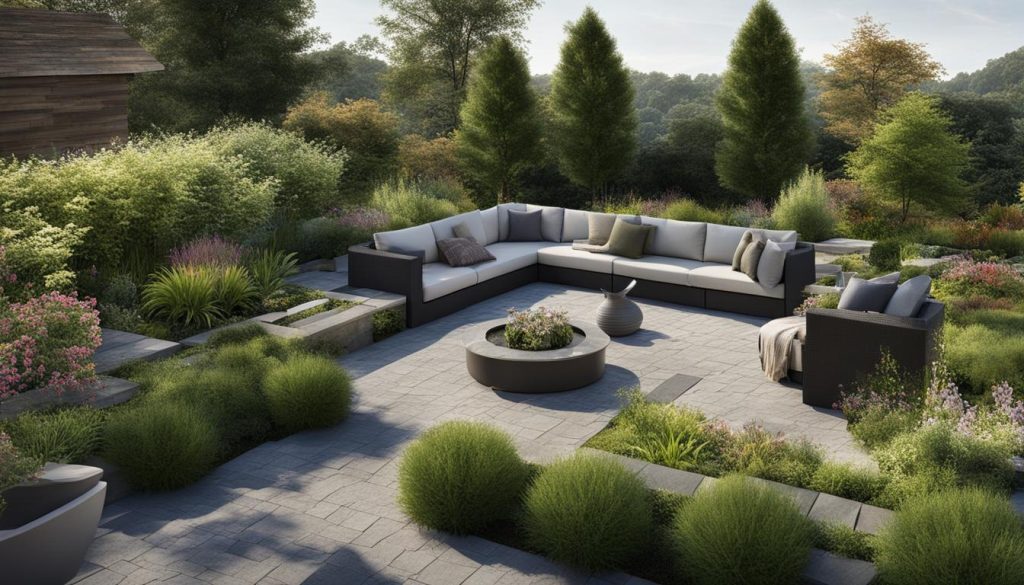
The Benefits of Landscape Evaluation
Why should you evaluate your landscape before starting a landscaping project? Here are a few benefits:
| Benefit | Description |
|---|---|
| Cost savings | By knowing your landscape’s strengths and weaknesses, you can avoid costly mistakes during the installation process. |
| Efficiency | Having a plan in place will help you stay organized and focused on what needs to be done, making the installation process more efficient. |
| Increased property value | A well-designed and maintained landscape can significantly increase the value of your property. |
By taking the time to evaluate your outdoor space, you can reap the rewards of a beautiful and functional landscape that will bring you joy for years to come.
Designing Your Landscape
Designing your landscape is an exciting step in creating your dream outdoor space. The first step in creating an effective design is to consider the layout of your outdoor area. You’ll want to consider the size and shape of your yard and determine how you want to divide the space. This will help you create a functional and visually appealing design.
One important aspect of landscape design is incorporating focal points. Focal points can draw attention to specific areas of your yard, such as a beautiful flower garden or a unique structure. They help to add interest and depth to your landscaping.
When choosing landscape elements, it’s crucial to consider functionality. The placement of your plants and structures should not only look visually appealing, but also serve a purpose. For example, consider adding a pathway that connects your patio to your garden or adding a shading structure to provide protection from the sun.
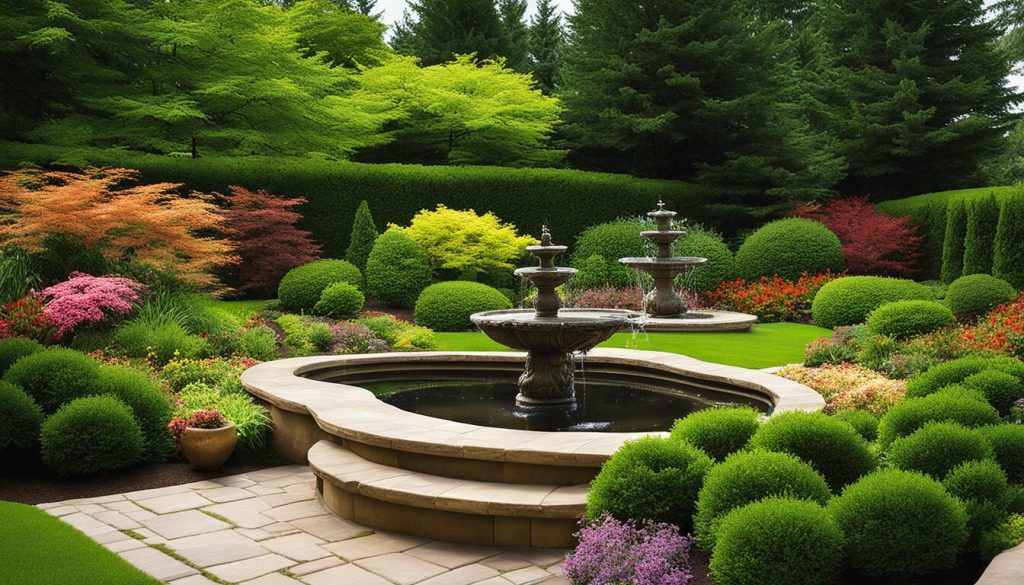
Another important consideration for landscape design is using appropriate materials and textures. This will help to tie your design together and create a cohesive look. For example, using natural stone for a pathway or adding a wooden structure can add texture and warmth to your outdoor space.
Tips for Effective Landscape Design:
- Consider the size and shape of your yard when creating your layout
- Incorporate focal points, such as a garden or unique structure
- Ensure all landscape elements are functional and serve a purpose
- Add texture and warmth with appropriate materials, such as natural stone or wood
By keeping these tips in mind, you can create a visually appealing and functional landscape design that will transform your outdoor space into the stunning oasis you’ve always dreamed of.
Choosing the Right Plants
Selecting the right plants for your landscaping project is crucial for creating a beautiful outdoor space. When choosing plants, it’s important to consider native species, climate, maintenance, and aesthetics. Native plants are well adapted to local conditions and require less maintenance than non-native species. They are also beneficial for wildlife and support biodiversity.
Consider your climate zone when selecting plants. Canada has a diverse climate, so it’s important to choose plants that can thrive in your specific region. For example, if you live in a dry area, drought-tolerant plants such as succulents and cacti may be suitable. Conversely, if you live in a wet area, plants that thrive in wet soil, such as ferns and hostas, may be the way to go.
Maintenance is another important factor to consider when choosing plants. Some plants require more maintenance than others, such as regular watering, pruning, and fertilizing. If you have a busy schedule or prefer low-maintenance plants, consider selecting species that require minimal care.
Lastly, consider the aesthetics of the plants. Think about the colors, textures, and shapes you want to incorporate into your landscape design. Selecting plants that complement each other and fit within your overall design vision will create a cohesive and visually appealing outdoor space.
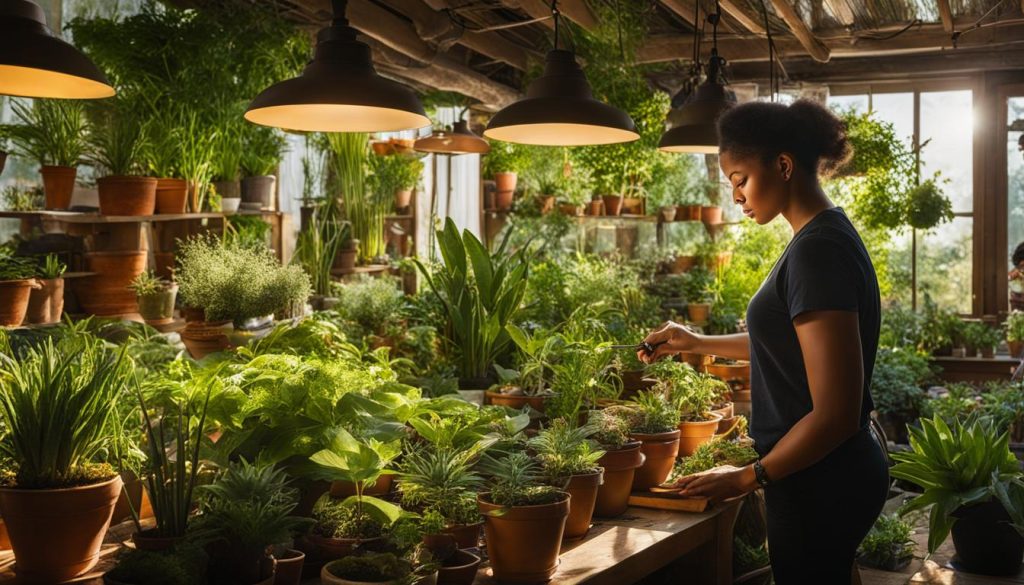
Remember, choosing the right plants requires careful consideration of native species, climate, maintenance, and aesthetics. By doing so, you can create a beautiful and thriving landscape that enhances your outdoor space.
Enhancing with Hardscaping Elements
Adding hardscaping elements to your outdoor space can bring a whole new level of functionality and character. Let’s explore some of the most popular hardscaping elements you can consider for your landscaping project.
Pathways
Pathways can provide an effective way to guide visitors through your outdoor space while adding a beautiful touch. Consider using natural materials such as stone, brick, or wood for a more rustic feel, or opt for sleeker pavers for a more modern look. Pathways can also help define different areas in your outdoor space, such as leading to your patio or garden.
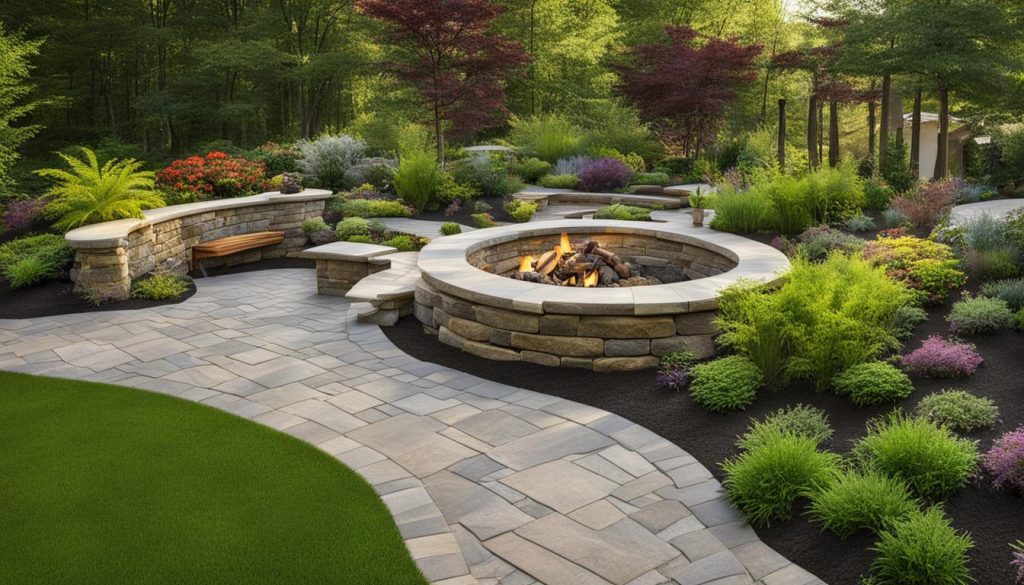
Patio
A patio can serve as the perfect place for outdoor entertainment and relaxation. When designing your patio, consider the size and shape of your outdoor space and how it will complement your home’s architecture. Choose materials that will withstand the elements and can provide a sturdy foundation for your outdoor furniture. Adding an outdoor fireplace or fire pit is a great way to extend your patio’s use throughout the year.
Structures
Structures can provide a focal point and functional element in your outdoor space. Consider incorporating pergolas, gazebos, or trellises to add height and dimension to your landscape. These structures can also provide shade and privacy while creating a cozy and intimate setting.
Water Features
Water features can bring a sense of calm and tranquility to your outdoor space while adding visual interest. Consider incorporating a fountain, pond, or waterfall into your landscaping project. These elements can also attract wildlife and create a natural ecosystem in your backyard.
When incorporating hardscaping elements into your landscaping project, it’s essential to consider how they will complement and enhance the natural elements of your outdoor space. With careful planning and execution, you can create a beautiful and functional outdoor space that you can enjoy for years to come.
Proper Maintenance and Care
Now that you have created a beautiful outdoor space, you need to maintain it. Proper maintenance is crucial for keeping your landscape looking its best all year round. Here are some essential tips to help you take care of your landscaping:
Landscape Maintenance
Regular landscape maintenance is essential for keeping your yard looking its best. Depending on the size of your space, you may need to perform maintenance every week or every two weeks. Here are some tips to help you get started:
- Mow the lawn regularly to keep it looking neat and well-manicured.
- Remove any dead plants or debris from your landscape to keep it clean and tidy.
- Trim bushes and shrubs to maintain their shape and prevent overgrowth.
- Keep your garden beds weed-free to prevent them from competing with your plants for water and nutrients.
Watering
Proper watering is essential for keeping your plants healthy and thriving. Here are some tips to help you get started:
- Water your plants deeply and less frequently to encourage deep root growth.
- Water in the early morning or late evening to reduce evaporation and ensure maximum absorption.
- Adjust your watering schedule based on seasonal changes and rainfall levels.
Fertilizing
Fertilizing your plants can help them grow stronger and healthier. Here are some tips to keep in mind:
- Choose fertilizers that are appropriate for your plants and follow the instructions carefully.
- Fertilize in the spring and fall to nourish your plants during their growing seasons.
- Apply fertilizers evenly and avoid over-fertilizing, which can cause damage to your plants.
Pruning
Pruning your plants is essential for maintaining their shape and promoting healthy growth. Here are some tips to help you get started:
- Prune your plants during their dormant periods to minimize stress and prevent damage.
- Cut back dead or diseased branches to prevent the spread of disease.
- Remove any crossing or rubbing branches to prevent damage and promote healthy growth.
Seasonal Changes
Seasonal changes can have a significant impact on your landscaping. Here are some tips to help you adapt to these changes:
- Adjust your watering schedule based on seasonal rainfall levels and temperature changes.
- Remove any dead or diseased plants before winter to prevent pests and disease from spreading.
- Apply mulch to your garden beds in the fall to protect your plants from the cold.
Landscaping Professionals: How They Can Help
If you’re feeling overwhelmed with your landscaping project, don’t worry! You can always seek help from landscaping professionals like us at Landscaping Vaughan. Our team of experts has years of experience in creating stunning outdoor spaces that exceed our client’s expectations.
By hiring a landscaping professional, you can benefit from our expertise and efficiency. We have the tools, knowledge, and skills necessary to transform your outdoor space efficiently and effectively.
Our consultation services are designed to help you achieve your dream backyard. We take the time to understand your vision, goals, and budget, then provide recommendations that fit your needs. We can work with you every step of the way, from assessing your outdoor space to designing your landscape, selecting the right plants, enhancing with hardscaping elements, and maintaining your garden for long-lasting beauty.
At Landscaping Vaughan, we pride ourselves on being one of the leading landscaping professionals in Canada. Our team is dedicated to delivering exceptional results that exceed your expectations. Give us a call today at (647) 812-8594 to schedule a consultation and start the journey towards your dream backyard.
FAQ
How can I assess my outdoor space?
To assess your outdoor space, take the time to evaluate your landscape and define your goals and vision for the project. Consider factors such as the size of the area, existing features, and any specific needs or preferences you have for your outdoor space.
What should I consider when designing my landscape?
When designing your landscape, it’s important to consider the layout, focal points, and functionality. Create an effective layout by determining the placement of different elements such as plants, pathways, and structures. Incorporate focal points to draw attention and add visual interest. Lastly, ensure functionality by considering how you will use the space and how different elements will interact with each other.
How do I choose the right plants for my landscaping?
To choose the right plants, consider factors such as native species, climate, maintenance requirements, and aesthetics. Select plants that are well-suited to your region’s climate and can thrive in your specific conditions. Consider the maintenance level you are comfortable with and choose plants that align with that. Lastly, select plants that complement the overall aesthetic you want to achieve in your landscaping.
What are hardscaping elements and how can I incorporate them?
Hardscaping elements refer to non-living features in your outdoor space, such as pathways, patios, structures, and water features. To enhance your landscape, choose hardscaping elements that complement the overall design and add functionality. Incorporate pathways to guide movement and create visual interest. Consider adding a patio for outdoor entertaining or relaxation. Structures like pergolas or gazebos can provide shade and focal points. Water features such as fountains or ponds can add a soothing ambiance to your outdoor space.
How do I properly maintain and care for my landscaping?
Proper maintenance and care are key to preserving the beauty of your landscaping. This includes regular watering, fertilizing, pruning, and adapting to seasonal changes. Water your plants appropriately, ensuring they receive enough but not excessive water. Fertilize according to the specific needs of your plants. Prune plants as needed to maintain their shape and health. Lastly, be mindful of seasonal changes and adjust your maintenance routines accordingly.
How can landscaping professionals help with my project?
Landscaping professionals have the expertise and experience to help you achieve your dream backyard. They can provide efficient and effective consultation services to guide you through the process. Whether you need assistance with design, plant selection, or overall project management, landscaping professionals like Landscaping Vaughan are dedicated to helping you create a stunning outdoor space. Contact our team at (647) 812-8594 to get started.

